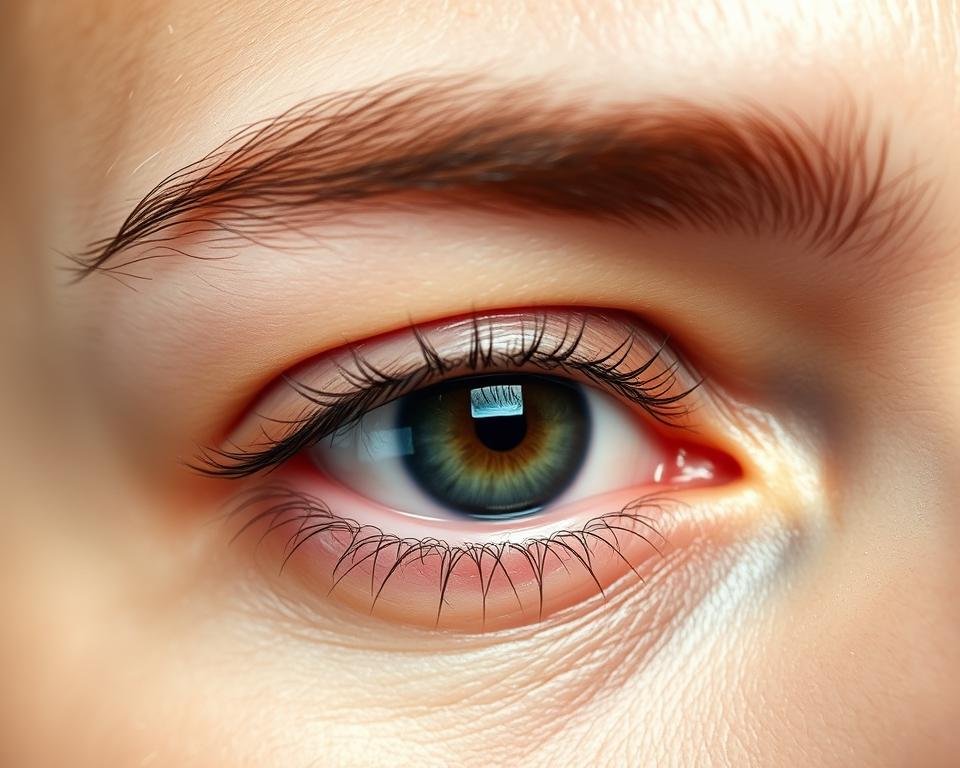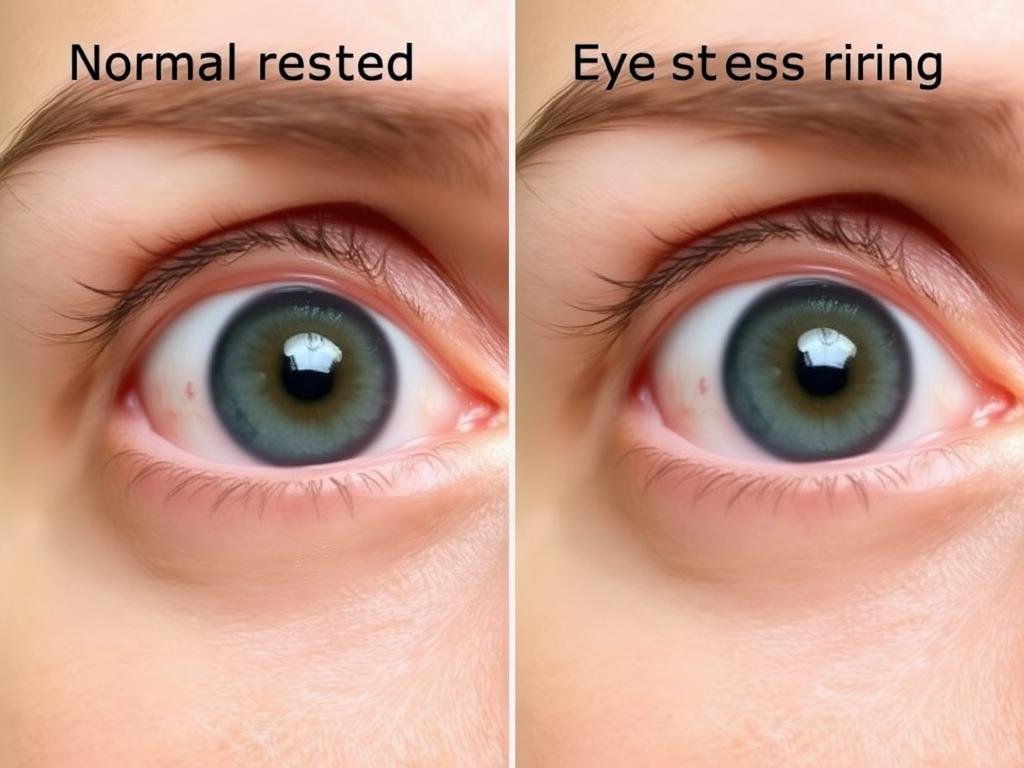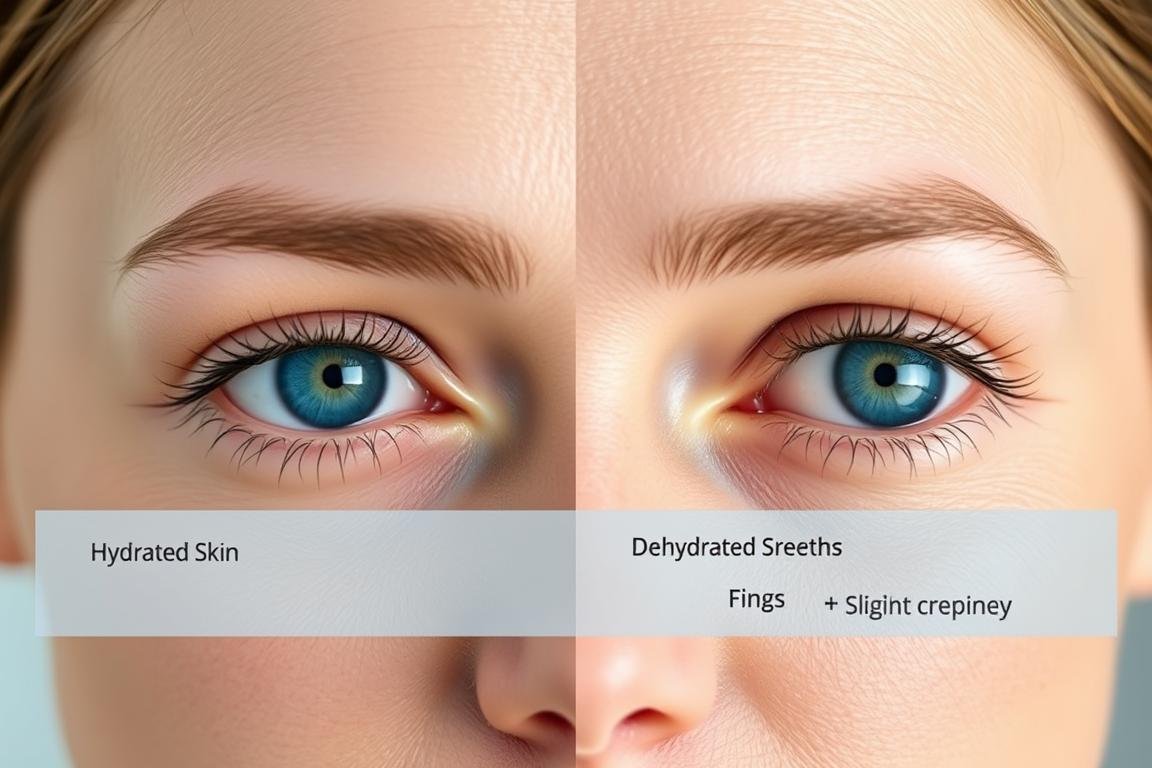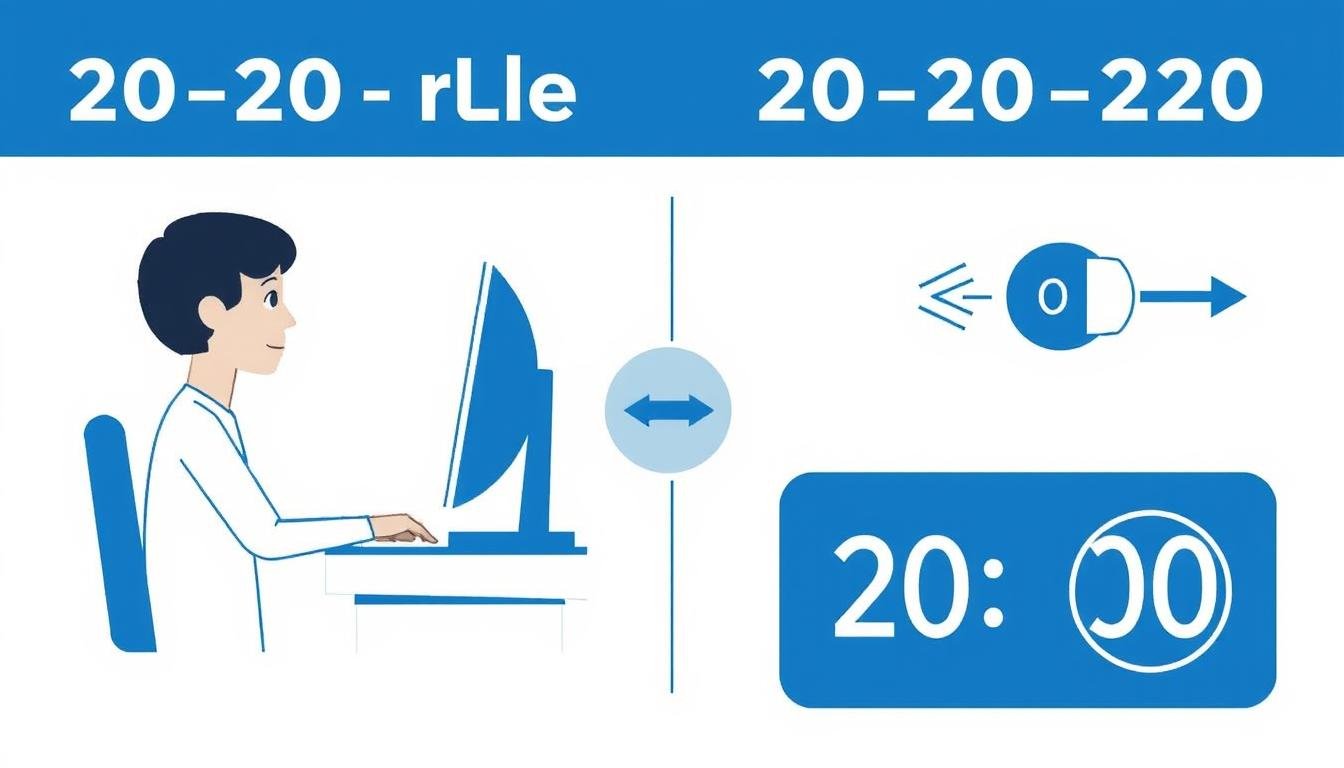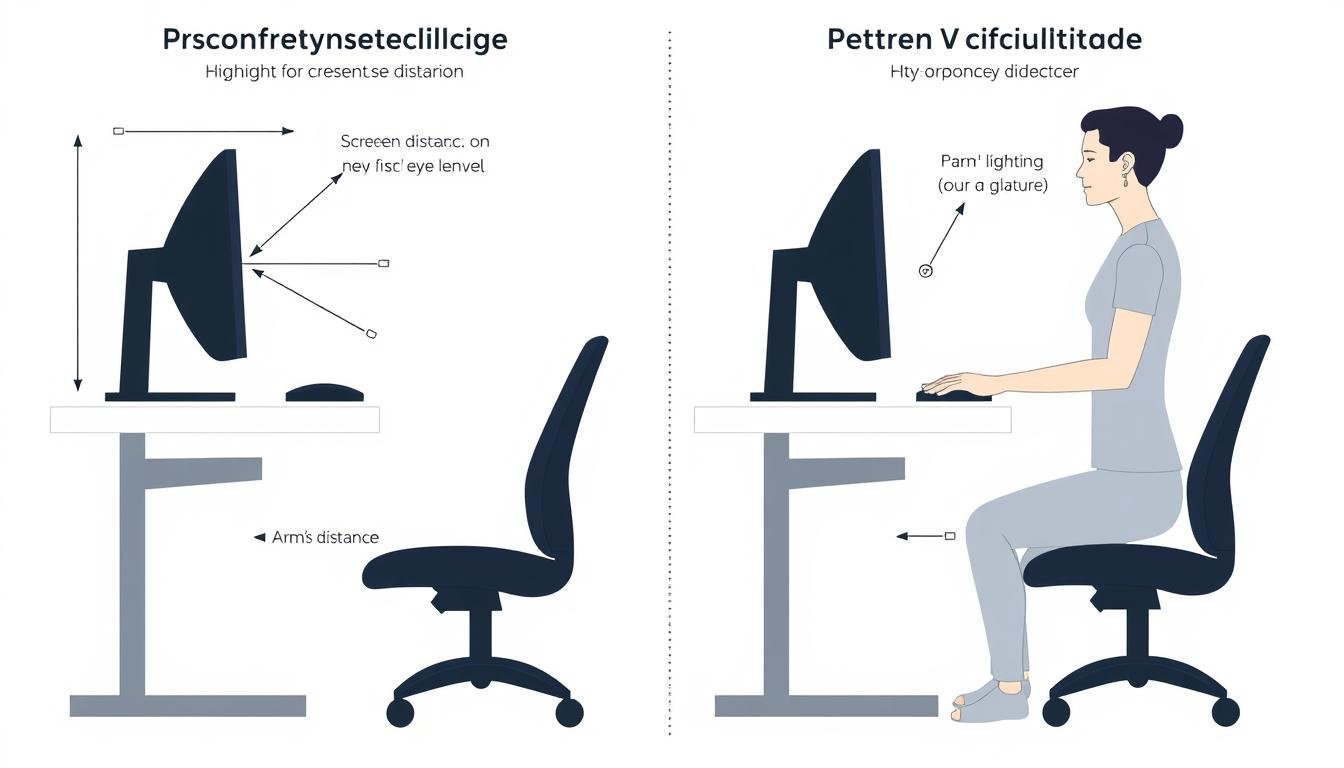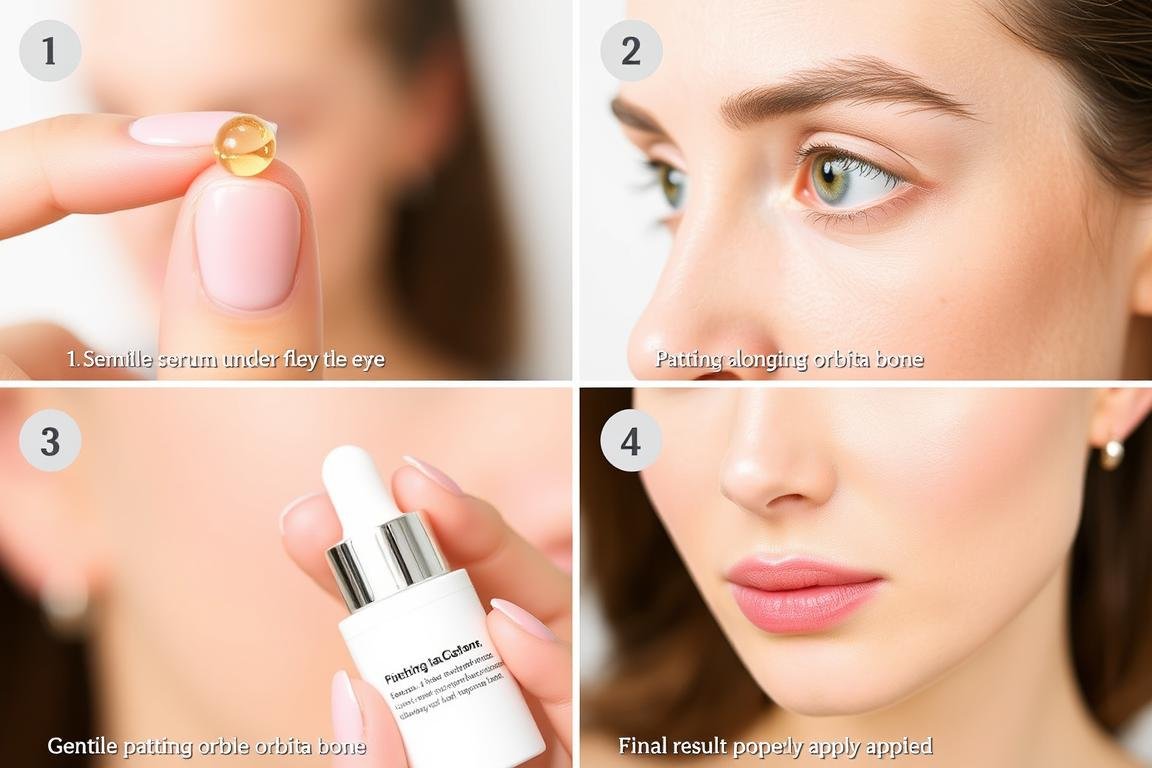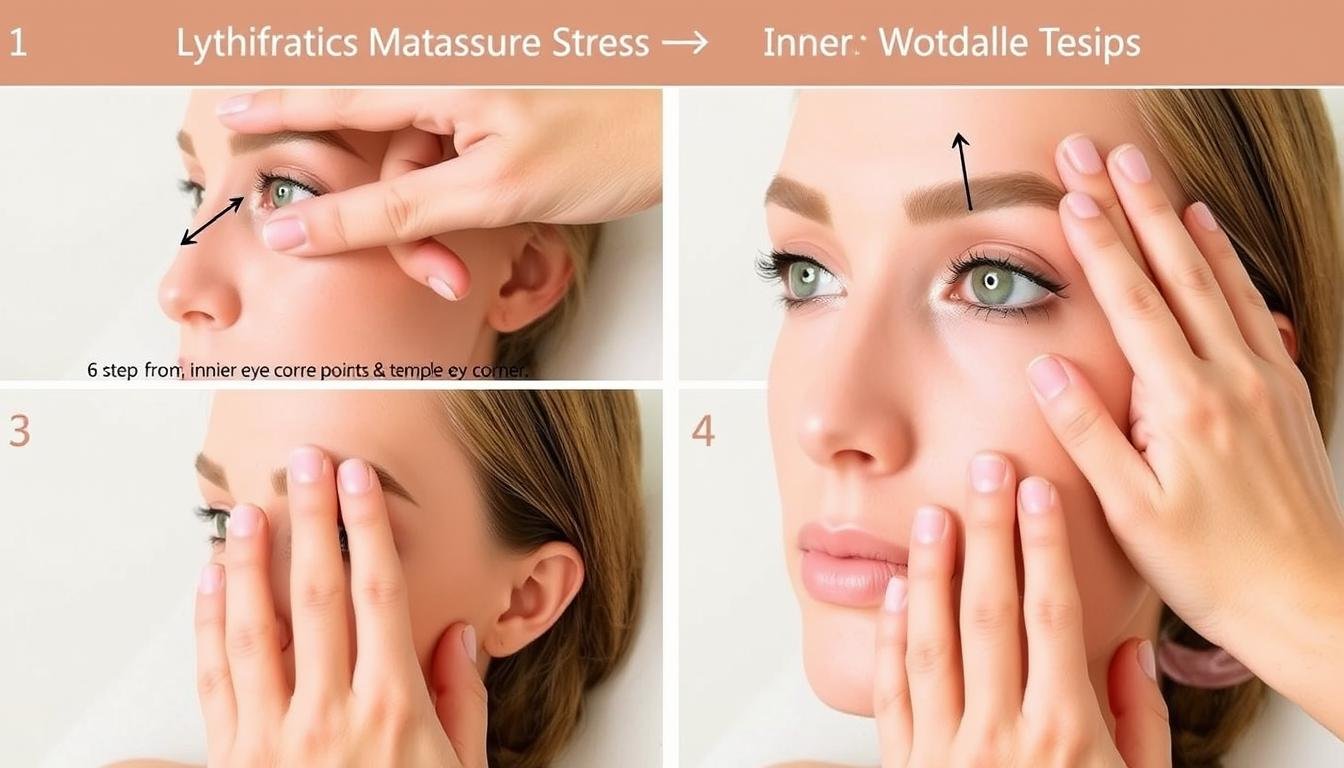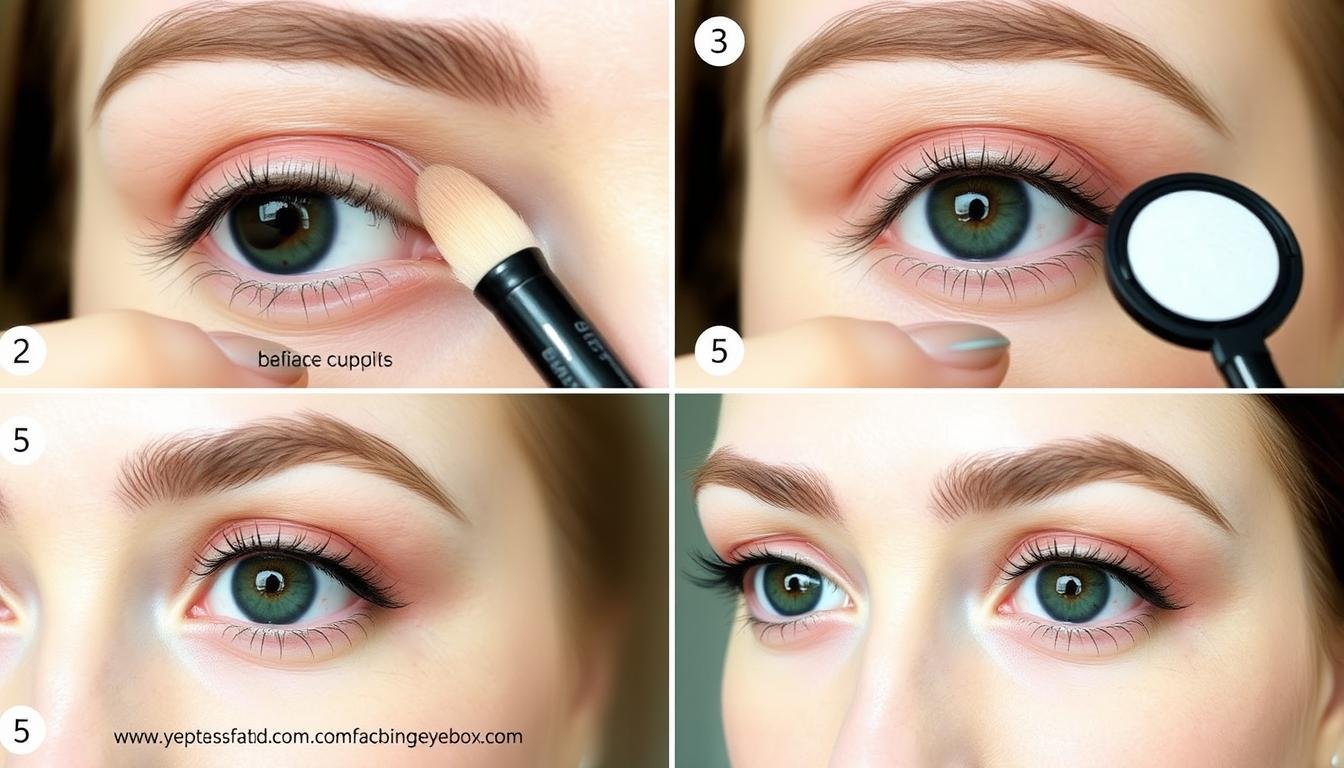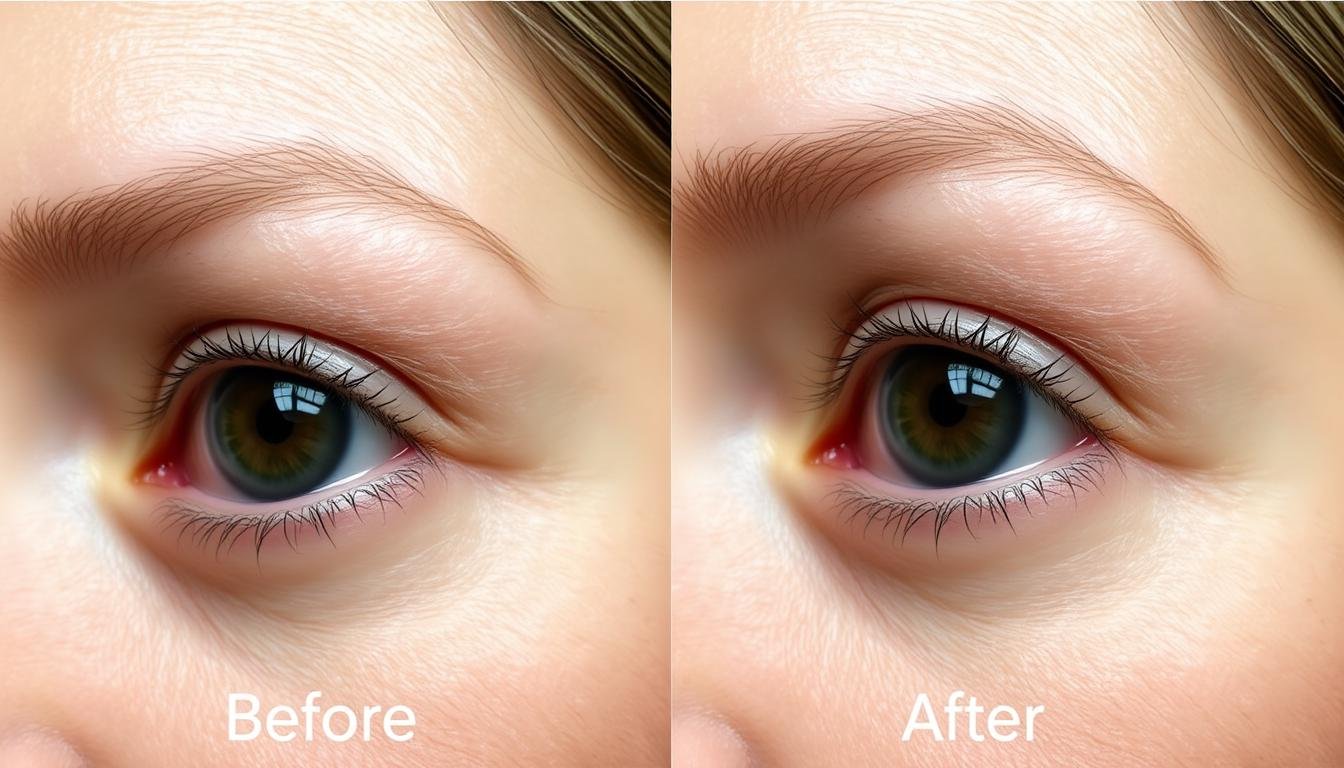Eye stress rings typically manifest as dark circles and puffiness in the under-eye area
Understanding Eye Stress Rings
Eye stress rings manifest in two distinct ways. From a conventional medical perspective, they appear as dark circles, puffiness, and fine lines around the eyes. In iridology (the study of iris patterns for health assessment), stress rings refer to circular contraction furrows in the iris that may indicate chronic tension or nervous system stress.
Dr. Michael Wei, a board-certified ophthalmologist, explains: “What most people call eye stress rings are actually changes in the delicate skin around the eyes. The skin here is approximately 0.5mm thick – about 40% thinner than elsewhere on your face – making it particularly vulnerable to showing signs of stress, fatigue, and aging.”
6 Primary Causes of Eye Stress Rings
1. Digital Eye Strain
Our increasingly screen-centric lifestyle has made digital eye strain a leading contributor to eye stress rings. When focusing on digital devices, our blink rate decreases by up to 66%, according to a study in the American Journal of Ophthalmology. This reduced blinking leads to dry eyes and increased muscle tension around the orbital area, contributing to the formation of eye stress rings.
Combat Digital Eye Fatigue
Our specialized blue light filtering glasses help reduce digital eye strain and protect your eyes during extended screen time.
Contact MAIKONG
2. Sleep Deprivation
Inadequate sleep directly impacts the appearance of eye stress rings. During sleep, your body undergoes crucial restorative processes, including fluid redistribution and tissue repair. Research published in Sleep Medicine reveals that even a single night of poor sleep can increase the visibility of under-eye circles by up to 35%. Chronic sleep deprivation compounds this effect, leading to more persistent eye stress rings.
3. Dehydration
When your body lacks sufficient hydration, it prioritizes vital organs over skin. This defensive mechanism causes the skin – particularly the thin area around your eyes – to appear duller and more transparent, making blood vessels more visible. Additionally, dehydration can trigger fluid retention as your body attempts to conserve water, creating puffiness that accentuates eye stress rings.
4. Allergies and Sinus Issues
Allergic reactions trigger the release of histamines in your body, causing blood vessels to dilate and become more visible beneath the thin skin around your eyes. Additionally, allergies often lead to eye rubbing, which can damage delicate capillaries and worsen discoloration. Sinus congestion compounds the problem by impeding proper drainage, creating pooled fluid that manifests as puffiness.
Dr. Lisa Chen, allergist at Comprehensive Allergy Center, notes: “Many patients are surprised to learn that their persistent eye stress rings are directly connected to untreated seasonal allergies or chronic sinus inflammation. Addressing these underlying conditions often produces dramatic improvements in the appearance of the eye area.”
5. Nutritional Imbalances
Deficiencies in key nutrients can significantly contribute to eye stress rings. Iron deficiency anemia reduces hemoglobin levels, decreasing oxygen delivery to tissues and creating a darker appearance under the eyes. Similarly, inadequate vitamin K impairs blood coagulation and can lead to fluid leakage from capillaries. Vitamin C deficiency weakens blood vessel walls, making them more prone to showing through thin skin.
6. Genetic Factors
Genetic predisposition plays a significant role in the development of eye stress rings. Inherited traits such as thinner skin around the eyes, hyperpigmentation tendencies, and deeper-set eye structures can make some individuals more susceptible to developing visible eye stress rings. Those with naturally fair or thin skin often experience more pronounced symptoms due to increased transparency that makes blood vessels more visible.
Identifying Eye Stress Rings: Key Symptoms
Physical Symptoms
- Dark discoloration beneath the eyes, ranging from bluish to brown
- Puffiness or swelling in the under-eye area
- Fine lines developing around the orbital region
- Hollow appearance or sunken eye sockets
- Visible blood vessels beneath thin skin
Associated Discomfort
- Eye fatigue or heaviness sensation
- Dryness or irritation of the eyes
- Increased sensitivity to light
- Mild headaches after extended visual focus
- Blurred vision after prolonged screen time
“The symptoms of eye stress rings exist on a spectrum, from barely noticeable to quite pronounced. What’s important to understand is that they’re often early warning signs of lifestyle factors that deserve attention – not just for cosmetic reasons, but for overall eye health and comfort.”
Dr. Rebecca Wong, Oculoplastic Surgeon
4 Effective Prevention Strategies
1. The 20-20-20 Rule for Digital Device Users
This simple yet powerful technique helps minimize digital eye strain. Every 20 minutes, shift your gaze to something approximately 20 feet away for at least 20 seconds. This brief reset allows your eye muscles to relax and reduces the cumulative strain that contributes to eye stress rings.
A clinical trial published in Optometry and Vision Science found that consistent application of the 20-20-20 rule reduced symptoms of digital eye strain by 47% among regular computer users. Consider using specialized apps or browser extensions that provide gentle reminders to take these important visual breaks.
2. Optimal Workspace Ergonomics
Proper ergonomic setup significantly reduces eye strain that leads to eye stress rings. Position your monitor approximately 25 inches (arm’s length) from your eyes with the top of the screen at or slightly below eye level. This positioning minimizes strain on both your eye muscles and neck, reducing tension that can contribute to eye stress rings.
Additionally, ensure your workspace has appropriate lighting that eliminates screen glare. Harsh overhead lighting or windows directly behind or in front of your screen force your eyes to work harder to compensate for the contrast differences. Consider using an anti-glare screen filter and positioning your workspace perpendicular to windows when possible.
3. Comprehensive Eye-Nourishing Diet
Nutrition plays a crucial role in preventing eye stress rings. Focus on incorporating these key nutrients into your daily diet:
- اوميگا 3 فٽي تيزاب – Reduce inflammation and support tear production (salmon, flaxseeds, walnuts)
- Vitamin C – Strengthens blood vessels and promotes collagen production (citrus fruits, kiwi, bell peppers)
- Vitamin E – Protects cells from oxidative damage (almonds, sunflower seeds, avocados)
- Vitamin K – Improves blood circulation and reduces dark circles (kale, spinach, broccoli)
- Iron – Ensures proper oxygen delivery to tissues (lean meats, lentils, tofu)
A clinical study in the Journal of Dermatological Science found that participants following a diet rich in these nutrients experienced a 31% reduction in under-eye darkness and a 24% decrease in puffiness over an eight-week period.
4. Proper Hydration Protocol
Maintaining optimal hydration is essential for preventing eye stress rings. The standard recommendation of eight 8-ounce glasses (about 2 liters) daily serves as a baseline, but individual needs vary based on activity level, climate, and overall health. For targeted eye health benefits, consider these hydration strategies:
- Begin your day with 16 ounces of water before consuming caffeine
- Set hourly hydration reminders during work periods
- Increase intake by 20% during screen-intensive days
- Consume hydrating foods (cucumber, watermelon, celery) alongside water
- Reduce alcohol and caffeine, which can contribute to dehydration
Research published in the International Journal of Cosmetic Science demonstrated that increasing daily water consumption by just 1 liter improved skin hydration in the eye area by 22% and reduced the appearance of eye stress rings in 87% of study participants after just two weeks.
5 Effective Treatment Methods for Eye Stress Rings
1. Targeted Cold Therapy
Cold treatments effectively reduce the appearance of eye stress rings by constricting blood vessels and decreasing fluid accumulation. This approach provides both immediate and cumulative benefits when used consistently.
“Cold therapy remains one of the most effective first-line treatments for eye stress rings. It works through vasoconstriction, essentially narrowing the blood vessels that contribute to dark circles, while simultaneously reducing the inflammatory response that causes puffiness.”
Dr. Jennifer Park, Dermatologist
For optimal results, try these cold therapy approaches:
- Refrigerated eye masks – Gel-based masks that maintain cold temperature for 15-20 minutes
- Chilled tea bags – Green or chamomile tea bags, steeped, cooled, and applied for 10 minutes
- Cold spoon therapy – Metal spoons refrigerated overnight and gently pressed against the eye area
- Cucumber slices – Natural cooling properties plus silica and antioxidants
Instant Relief for Tired Eyes
Our therapeutic cooling eye mask uses advanced gel technology to maintain the optimal temperature for reducing eye stress rings.
ارڊولوجي سافٽ ويئر
2. Specialized Eye Serums and Creams
Topical treatments formulated specifically for the eye area can effectively address eye stress rings when they contain the right active ingredients. Look for products featuring these key components:
- Caffeine – Constricts blood vessels and reduces fluid retention
- Peptides – Stimulate collagen production and strengthen thin skin
- Niacinamide – Improves skin barrier function and reduces discoloration
- Vitamin C – Brightens skin and supports collagen synthesis
- Hyaluronic acid – Hydrates and plumps thin skin to reduce transparency
Apply eye products using your ring finger (which naturally applies the least pressure) with a gentle patting motion rather than rubbing. For maximum efficacy, apply to clean skin and allow full absorption before applying other skincare products or makeup.
3. Lymphatic Drainage Massage
Lymphatic drainage massage helps eliminate excess fluid that contributes to puffy eye stress rings. This gentle technique stimulates the lymphatic system to process and remove fluid buildup more efficiently.
Follow this simple 2-minute routine twice daily:
- Apply a small amount of eye-safe oil or cream to prevent pulling the delicate skin
- Using your ring fingers, start at the inner corners of your under-eye area
- Apply very light pressure (imagine touching a bubble without popping it)
- Gently tap along the under-eye area moving outward toward your temples
- Once at the temples, use slightly firmer pressure and massage in small circular motions
- Repeat the entire sequence 3-5 times
A study in the Journal of Cosmetic Dermatology found that participants who performed lymphatic drainage massage twice daily experienced a 38% reduction in under-eye puffiness after just two weeks.
Enhance Your Eye Massage
Our rose quartz eye massage tool stays naturally cool and helps improve lymphatic drainage when used with your favorite eye serum.
ارڊولوجيڪل نقشو
4. Professional Treatments
For persistent or severe eye stress rings, professional treatments performed by dermatologists or aesthetic specialists can provide more dramatic results:
Laser Therapy
Treatments like IPL (Intense Pulsed Light) target the blood vessels that cause dark circles. These procedures stimulate collagen production and can reduce pigmentation issues that contribute to eye stress rings.
Hyaluronic Acid Fillers
Injectable fillers can restore volume to hollow areas under the eyes that create shadows. This treatment is particularly effective for eye stress rings caused by volume loss rather than pigmentation.
Chemical Peels
Gentle chemical peels containing glycolic or lactic acid can help lighten dark pigmentation around the eyes and improve skin texture, reducing the appearance of eye stress rings.
PRP Therapy
Platelet-rich plasma therapy uses your body’s own growth factors to stimulate collagen production and tissue regeneration in the under-eye area.
5. Targeted Makeup Techniques
While addressing the root causes of eye stress rings, strategic makeup application can help minimize their appearance:
- Color correction – Use peach/orange correctors for blue-toned circles, yellow correctors for purple tones
- Lightweight concealer – Choose formulas with light-reflecting properties, one shade lighter than your foundation
- Setting technique – Apply minimal translucent powder to prevent creasing without emphasizing texture
- Highlighting strategy – Place a subtle highlight at the inner corner to create the illusion of brightness
Makeup artist Victoria Chen advises: “The key to concealing eye stress rings is using thin layers rather than one thick application. Build coverage gradually and focus on blending the edges seamlessly into surrounding skin for the most natural result.”
Frequently Asked Questions About Eye Stress Rings
Can stress cause under-eye rings?
Yes, psychological stress directly contributes to the formation of eye stress rings through multiple mechanisms. When you’re stressed, your body produces excess cortisol, which can increase blood flow to major organs and reduce flow to peripheral areas like the skin around your eyes. This altered circulation pattern can make blood vessels more visible beneath thin under-eye skin.
Additionally, stress often disrupts sleep patterns, exacerbates existing allergies, and can lead to stress-related behaviors like eye rubbing or squinting – all of which worsen eye stress rings. A study in the International Journal of Dermatology found that participants experiencing high stress levels were 37% more likely to report severe dark circles compared to those with low stress levels.
Implementing stress management techniques such as meditation, deep breathing exercises, or regular physical activity can significantly reduce the appearance of stress-related eye rings over time.
Do eye creams really work for eye stress rings?
Eye creams can be effective for treating eye stress rings, but their efficacy depends on several factors: the specific cause of your eye stress rings, the active ingredients in the product, and consistent application. Not all eye creams are created equal, and results vary based on individual circumstances.
For eye creams to work effectively:
- Choose targeted formulations – Select products with active ingredients that address your specific type of eye stress rings (caffeine for puffiness, vitamin C for darkness, peptides for fine lines)
- Be consistent – Apply twice daily for at least 4-6 weeks before evaluating results
- Have realistic expectations – Eye creams can improve appearance but may not completely eliminate severe eye stress rings
- Combine with lifestyle changes – Address root causes like sleep deprivation or dehydration alongside topical treatments
Clinical studies show that eye creams containing ingredients like caffeine can reduce puffiness by up to 30% and those with vitamin C can improve darkness by up to 15% after 12 weeks of consistent use.
اکين جي دٻاء کي گهٽائڻ ۾ ڪيترو وقت لڳندو آهي؟
The timeline for reducing eye stress rings varies significantly depending on their cause, severity, and the treatment approach. Here’s a general timeline of what to expect:
- Immediate relief (minutes to hours): Cold compresses, cucumber slices, and specialized eye masks can temporarily reduce puffiness and constrict blood vessels
- Short-term improvement (1-3 days): Addressing sleep deficits, increasing hydration, and reducing salt intake can show noticeable improvements within days
- Medium-term results (2-4 weeks): Consistent use of eye creams with active ingredients, regular eye exercises, and dietary improvements typically show results within a month
- Long-term resolution (1-3 months): Comprehensive lifestyle changes, professional treatments, and addressing underlying medical conditions may take several months to fully resolve eye stress rings
For most people, implementing a combination of immediate relief strategies alongside consistent longer-term approaches yields the best results. Patience and consistency are key – improvements are often gradual rather than dramatic.
Moving Forward: Your Action Plan for Addressing Eye Stress Rings
Eye stress rings have become increasingly common in our modern, screen-dominated world. However, with the right approach, you can significantly reduce their appearance and improve your overall eye comfort. The key lies in combining immediate relief strategies with consistent long-term practices that address the root causes of your specific eye stress rings.
Remember that prevention is always more effective than treatment. Implementing the 20-20-20 rule during screen time, optimizing your workspace ergonomics, maintaining proper hydration, and nourishing your body with eye-healthy nutrients can dramatically reduce your susceptibility to eye stress rings before they become pronounced.
For existing eye stress rings, a multi-faceted approach typically yields the best results. Combine targeted cold therapy and specialized eye products with lifestyle modifications that support overall eye health. For persistent or severe cases, consider consulting with a dermatologist or ophthalmologist about professional treatment options.
Complete Eye Wellness Kit
Address all aspects of eye stress rings with our comprehensive kit including cooling eye mask, specialized serum, blue light glasses, and digital eye strain guide.
Shop order

Visible improvement after 4 weeks of consistent treatment for eye stress rings

